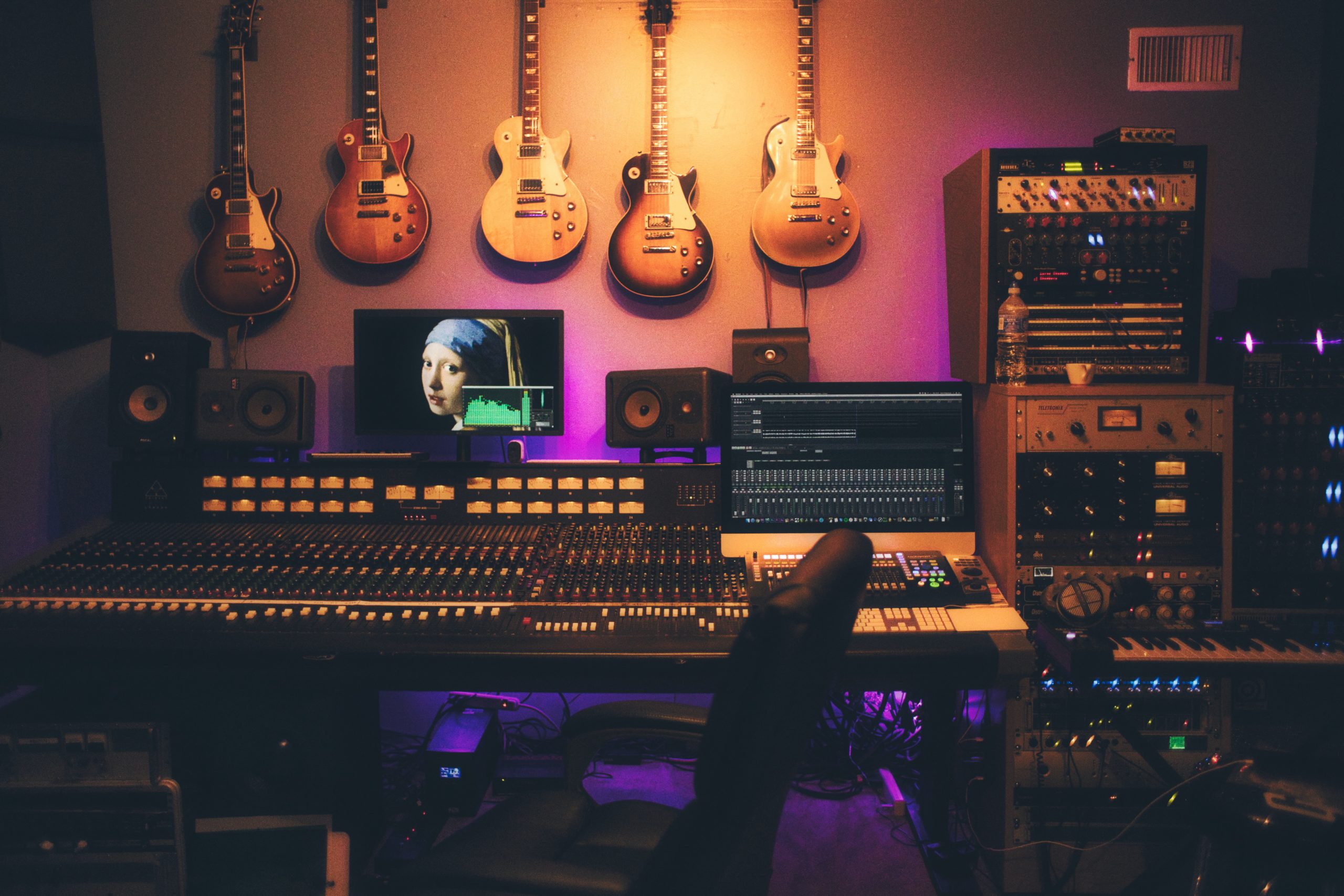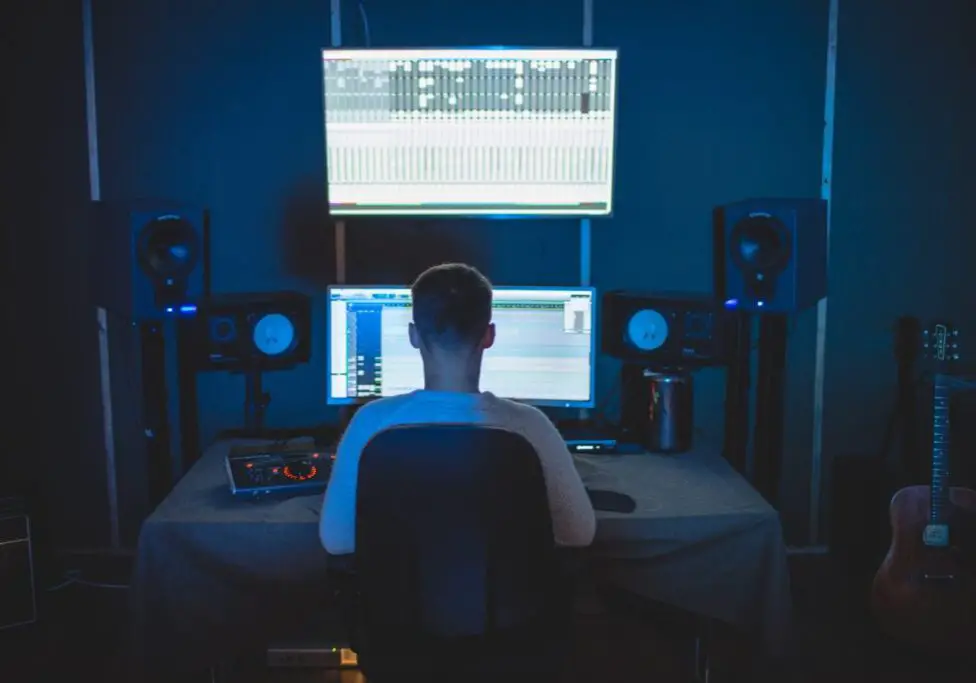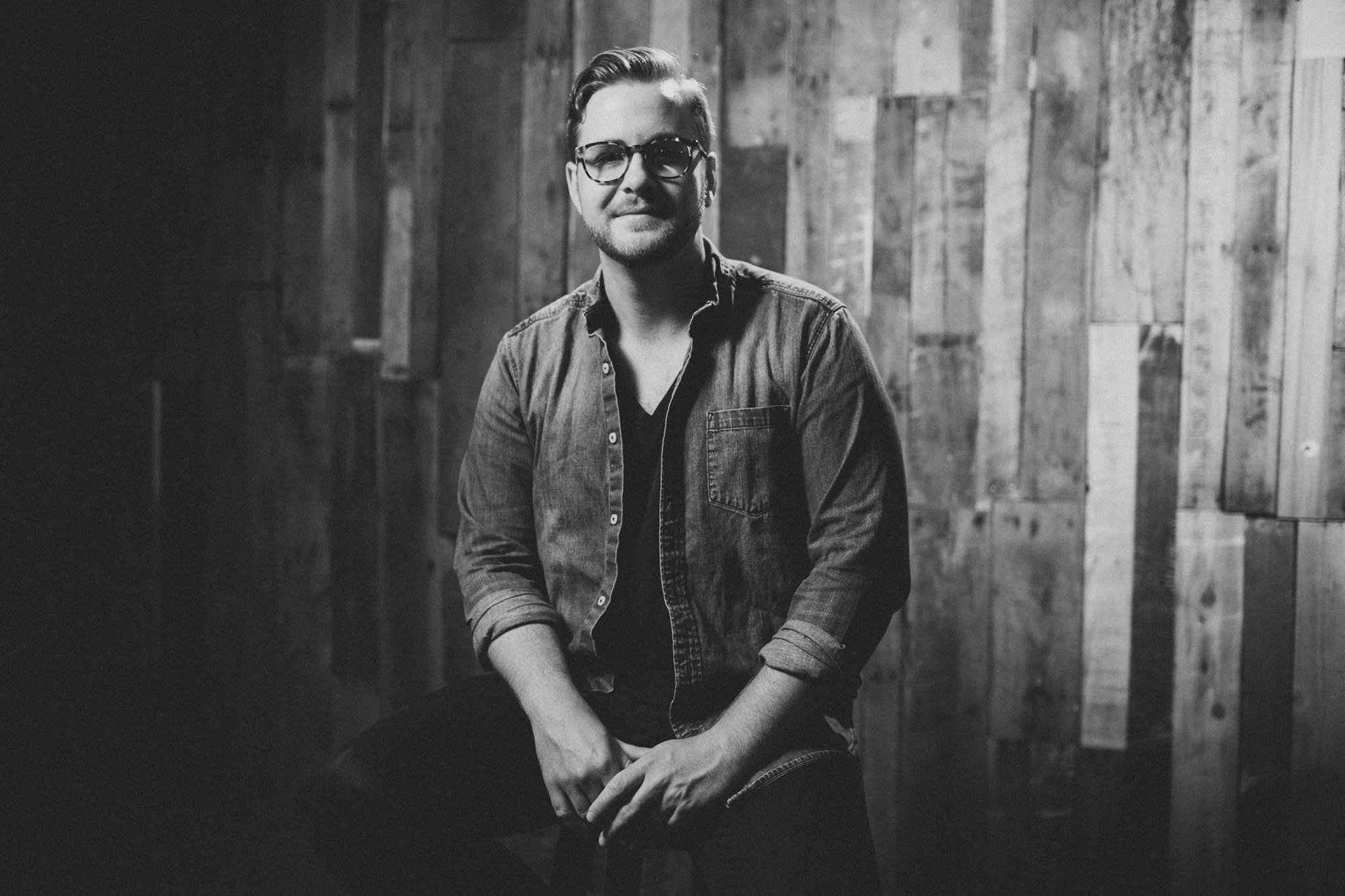Guest post by: Caleb J. Murphy
You’re here because you want to learn how to write music for sync licensing.
You want to get your music in TV shows, commercials, video games, and/or films.
In this post, I’ll go through how to write and pitch your songs for sync licensing.
(For context, my music has been used on ABC, NBC, and in a ton of indie film projects.)
The Most Important Rule When Writing for Sync Licensing

When it comes to writing songs for sync licensing, the most important rule is to be authentic.
Sacrificing your authenticity for the chance of making money and getting exposure is what we call “selling out.”
If you stay authentic, you’ll feel okay with yourself as a human and an artist no matter what happens with your music.
Not only is being authentic more creatively satisfying, but music supervisors also say they can smell when someone is being fake.
Music supervisors are the people who choose the music for TV shows, films, and commercials.
Morgan Rhodes, music supervisor for Selma, Dear White People, and many other shows and movies, says she loves giving a small artist who has great music a big break by placing their song.
Supervisors are music lovers and often musicians themselves, so they love finding artists with an interesting sound.
And “interesting” only comes from being authentic, not trying to copy other artists.
Music supervisor Chris Mollere (Get Out, Pretty Little Liars, The Vampire Diaries) seconds this idea of being an authentic artist, first and foremost.
“Make the music that is inside you that you have to get out,” he says. “Because that’s what life’s all about. You gotta do what is inside you and what you feel is that thing that makes you tick.”
Be authentic. Never sacrifice your creative freedom for the sake of money.
Remember that as you read this post.
The 6 Types of Songs That Usually Work in Sync Licensing
If any of the songs you write fall into one of these six categories, they have a better chance of getting synced.
According to sync publisher Randall Foster, a syncable song fits into one or more of these “6 Pillars of Sync.”
Anthem
An anthem is a celebratory song you can shout out the car windows. Usually the verses are calmer so they contrast with the explosive chorus.
Two examples of anthemic songs are “Viva La Vida” by Coldplay and “We Are Young” by Fun.
Swagger
When a song make you feel like a sexy bada**, that’s a swagger song. It’s got groove. It makes you put on a stank face.
Swagger songs are usually swagger-y the whole way through, as opposed to having calm verses and groovy choruses.
Good examples of swagger songs are “Jesus Walks” by Kanye West, “Take Me Out” by Franz Ferdinand, and “The Man” by The Killers.
Assurance
Assurance songs are all about offering a promise. Declaring loyalty, promoting honor, or holding to a strong bond.
Any song that feels welcoming and sings about the topics of love and home.
A good example is “Home” by Edward Sharpe & The Magnetic Zeros.
Sultry
Sultry songs are all about passion and attraction. These would be songs about romantic love or that use sexual or erotic language.
Just be careful — if a song is R-rated, it may not do well in sync, unless you have a clean version.
A good example of a sultry song is “Ex’s and Oh’s” by Elle King.
Joy
The joy of a song can come from the lyrics, the instrumentation, or a combination of both. Many times, a joyful song can have an anthemic feel, but it doesn’t need to.
Whatever the case, it’s almost always upbeat, usually in the pop genre.
A good example is “Boom Clap” by Charli XCX.
Modern
Songs in this category are constantly changing. Modern songs, in this context, are any songs that push against the conventional production choices in a way that’s not too “out there.”
It’s a difficult category to nail down.
You’ll often hear these songs in commercials for high-end, sleek brands like Apple.
Examples that were modern (but may not be anymore) are “Modern Drift” by Efterklang and “Memories That You Call” by ODESZA.
How To Write Music for Sync Licensing: 5 Tips
Assuming you’re writing with complete authenticity, here are some tips on how to write music for sync licensing.
Write a lot
The best songwriters write a ton of songs.
Bob Dylan has written nearly 500 songs.
Paul McCartney has written or co-written well over 500 songs.
Smokey Robinson, whom McCartney said was “like God in our eyes,” has written or co-written hundreds of songs.
Carole King has written hundreds of songs.
And this doesn’t even include the songs these people didn’t release.
Ed Sheeran, who’s had plenty of success as a songwriter, said he would write “a song a day or two songs a day or five songs a day.”
“You view it as a dirty tap,” he says about songwriting.
“When you switch a dirty tap out, it’s gonna flow sh*t water out for a substantial amount of time — and then clean water is going to start flowing. And now and then you will get a bit of sh*t, but as long as it gets out of you, it’s fine.”
The more you do something, the better you’ll get.
So in order to become a great songwriter, write a lot and often.
Don’t get too specific
If you tell a very specific story in your song, it may lessen the chance of it getting synced.
I’m not saying you shouldn’t write these types of songs, but just be ready for them to not do well in sync licensing.
The songs you may find do better are more universally relatable.
Music supervisors especially want the chorus to be relatable to a wide array of people.
So your songs that aren’t as specific will probably do better for TV and film.
Make it emotional

This is a given. The power of music lies in the emotion of the songwriting.
So I know you already know this, but your music will have legs only if it’s emotional.
This is just a reminder to stay in tune with the emotion of whatever song you’re writing.
If it doesn’t cause an emotional reaction in you, it probably won’t do anything for the listener.
Make it catchy
If you like to write short, catchy melodies, you can do well in sync licensing.
This doesn’t mean your songs have to be pop music.
You can write in your preferred style and genre and still write memorable melodies.
The simpler and more memorable a song is, the better it can do on TV.
Keep it clean (or record a clean version)
Television channels, at least most of them, don’t air music with cuss words or dirty lyrics.
Feel free to write songs like that.
But if you want them to get synced, you’ll need to record a clean or radio-edit version.
How To Pitch Your Songs for Sync Licensing
After you’ve made some authentic music that you feel could do well in sync licensing, here’s how to pitch your songs.
The people you’ll be pitching your music to will be sync licensing companies and music supervisors.
How to prepare
Before you submit your music, you have to make sure you have a few things in place. These steps will make it easier for the company or supervisor to sync your music, so they’re important.
Mix and master your tracks
Your songs have to be professionally mixed (either by you or someone else) and mastered (I recommend hiring a professional).
There’s just no way around this. Your music has to meet industry standards.
Have instrumentals
Music supervisors often need songs without lyrics, or at least the instrumental version of a song with lyrics.
Why?
Because there’s probably going to be talking in the TV show, commercial, or film. So they don’t want someone singing words while the actors are speaking words. It’s confusing.
So make sure you mix and master the instrumental versions of each song. Simply mute the vocals after you’ve mixed the track, then send that version for mastering.
Make 30- and 60-second versions
This is not always necessary, but it can be a great idea if you want to exceed expectations.
Shorter versions, usually instrumental, are more desirable in indie film projects.
For example, there could be a filmmaker who needs a 30-second version of your song because they’re making a 30-second social media video for a small business.
It’s also a good idea to have these shorter versions in case a brand wants to use your song in a commercial.
Enter the metadata
You need metadata, especially when you’re submitting to music supervisors.
Supervisors receive so much music every day, so they tend to have a huge library of music on their computers.
And the thing that makes it easy for them to find the song they need is metadata.
Metadata is information written into the MP3/WAV files. So a supervisor can search their library for “nostalgic” tracks and it will pull up all the tracks that have been tagged with that mood.
Then, if a supervisor wants to license your track, they can see your name, email address, phone number, songwriters, and publishing owners.
And it’s all thanks to metadata.
The easiest way to add metadata to your songs is through DISCO.
Reputable Sync Licensing Companies
There are tons of sync licensing companies out there, and it seems like a new one pops up every day.
There are a mix of great ones and not-so-great ones, but below are a few that are definitely reputable.
To submit music to a licensing company, simply go to their submissions page and follow their instructions.
Crucial Music
Crucial Music has placed my music on ABC and NBC, and they’ve pitched my songs to many other places. So I can say from first-hand experience, they’re great.
They are known for being selective (they’ve rejected about half of my submissions), so if you get onto their roster, that’s good news. That means you have music they believe could get licensed.
Their other clients include Amazon Prime Video, Apple TV+, CBS, and Chrysler.
Musicbed
Musicbed is more focused on appealing to filmmakers, but they’ve gotten a lot of big placements too, including a Super Bowl commercial.
As a musician on Musicbed, you can get smaller placements from indie creators, and you can also get bigger placements on TV.
They too are very selective.
Their clients include Nike, Google, ESPN, and XBOX.
Songtradr
Songtradr allows any musician to create a profile and upload music. And they have a few ways you can make money on the platform.
They have traditional sync licensing opportunities with both smaller creators and major brands, like Netflix, Amazon, NBC, and Volkswagen.
They also have something called “monetization,” which is where you get paid when your songs get streams/views on radio stations, games, and on apps (like TikTok and Twitch).
How to Find and Contact Music Supervisors

As I said before, music supervisors are the people who choose the music for TV shows, movies, and commercials.
But how do you find them and submit your music?
Finding a music supervisor’s email address just requires some research. You can use IMDb, iSpot.tv, and Tunefind to look for contact info.
When you email them, keep it polite, professional, and short.
“I respond to polite and charming,” says music supervisor Lindsay Wolfington. “Not assuming anything. Cockiness is really unattractive to me.”
So here’s what your email could look like:
– – –
SUBJECT: Sounds like [POPULAR ARTIST] for [SHOW/MOVIE THE SUPERVISOR IS WORKING ON]
BODY:
Hi, [NAME].
I just watched [TV SHOW OR MOVIE THE SUPERVISOR WORKED ON] and thought the music selection was perfect!
My music sounds like [ARTIST YOU SOUND LIKE]. I own 100% of these songs.
So here are a couple of my best songs (private DISCO links that allow downloading if needed):
[LINK TO DISCO PLAYLIST]
I look forward to hearing from you!
Take care,
[YOUR NAME]
– – –
Short and sweet and to the point.
In Summary
First and foremost, write songs authentically. That’s the type of music that supervisors want, and those are the songs you’ll be most proud of.
After you write a song, see if it fits into one of the six categories that do well in sync licensing.
Then prepare to pitch that song to sync licensing companies and music supervisors. Get it mixed and mastered, have instrumental versions, add metadata, and even create shorter versions of the song.
Then pitch it.
Then rinse and repeat.
That’s how to write music for sync licensing and get your songs published.
Author Bio
Caleb J. Murphy is a songwriter and producer whose music has been on ABC, NBC, and hundreds of other places. He also runs Musician With A Day Job, a site that helps part-time songwriters and artists build a music career one day at a time.


